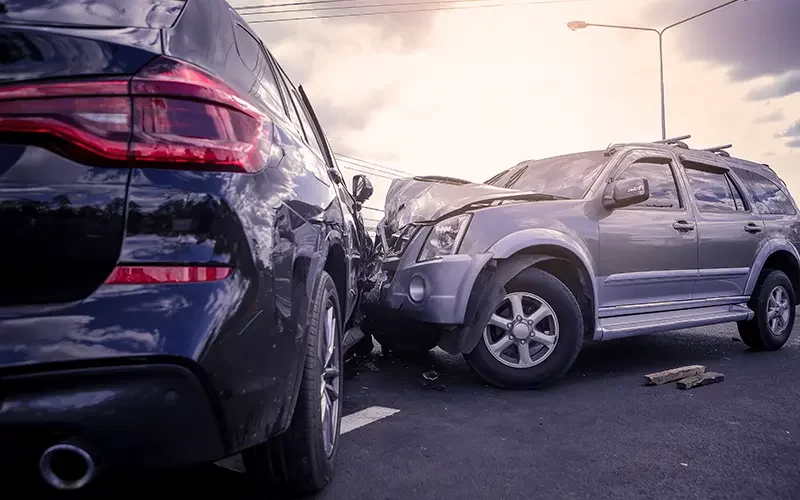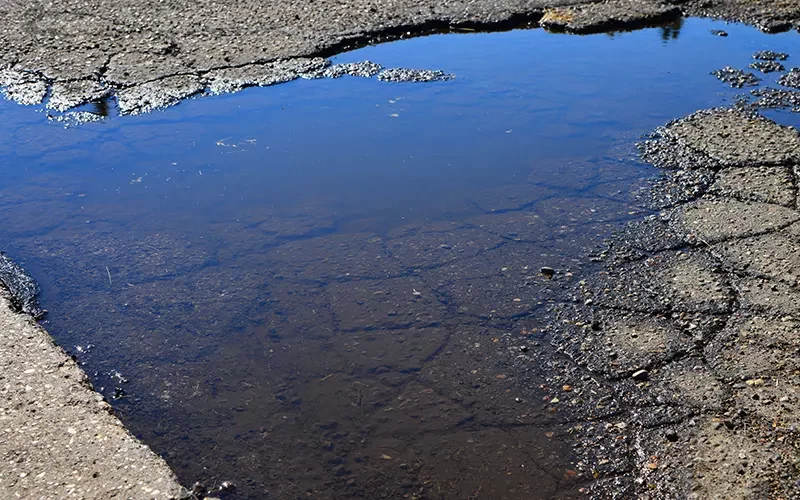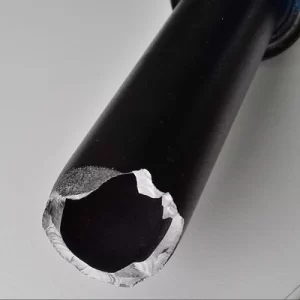These are just some examples of the hundreds of accidents we have dealt with. We have to show that the other driver was negligent in law – not difficult in most cases. You may even have a claim if you think you are partly to blame – see the page on contributory negligence.


In order to make a successful claim for your accident, there are certain things we have to establish, but whichever applies we will need as much information as possible about the surrounding circumstances – how long the defect had been there; if anyone else had reported it; whether you already knew it was there etc.
If you have hit something sticking up from, or a hole in, the surface of the road:
Firstly, we must show that the defect is bad enough to be considered a clear hazard to people using the area.
The guideline marker for defects on the pavement is that the trip must be at least 1 inch (25mm) above or below the surface of the pavement, or at least 2 inches (50mm)for a road.
That part of the claim is usually the least difficult to deal with, because it will be fairly clear in most cases whether or not the defect is a danger to road users. However, it is important that you get some photographs of the defect BEFORE it is repaired. Once the council (or other body responsible for the area) becomes aware that there has been an accident, they will normally be very quick to carry out repairs! If you are able try to obtain photographs, preferably using some sort of measure against which to compare the size – e.g. a rigid ruler, or some other identifiable object.
The second thing we must show is that either: the local authority with responsibility for the road either knew of the defect and did not repair it; or that they did not carry out regular inspections of the road. This should usually be done at a minimum of 6 monthly intervals, but what is considered reasonable will vary according to the type of road.
Finding out whether the road has been inspected regularly enough is the difficult part of a claim such as this. Local authorities rarely co-operate in these claims, and often the only way to find out whether they have inspected is to issue proceedings through the court. We can then force them to show us their inspection records.
If your accident has been caused by something left/fallen/spilled on the highway if it can be shown that the Highway Authority were made aware of the spillage before your accident and did nothing about it within a reasonable time.
You should be able to claim if we can identify who was responsible for the spill, then you will be able to make a claim against them: the most common example of this type of claim is where work has been carried out and the contractors have failed to clean up properly, or have left their materials, or mud on the road, causing a hazard.
However, if you are unable to identify who caused the spillage then it may be possible to claim through the Motor Insurers’ Bureau (“MIB”). If it can be established the spillage was caused by a motor vehicle which would have been required to have insurance for use on the road (most vehicles), then this will normally result in a person recovering similar compensation for their injuries and losses (some losses are exempt) as they would in a court claim against an identified opponent.
The most important thing that we need to advise you of with these claims is that they can take some time to settle - on average 12 to 18 months - due to most local authorities’ or contractor’s delays.
However, you have our assurance that any delays will be due to factors outside our control and that we will deal with your claim as quickly as possible.
Provided work has been carried out on the road by the Highway Authority or someone contracted or authorised by them. The important thing is to obtain photographs (showing measurements) of the poor surface before it is repaired, so there is evidence of its condition. The fact of the poor repair can sometimes lead to a successful claim against the Highway Authority.
Accidents can be caused where drain covers with slots are inserted with the slots running parallel with the direction of the traffic instead of perpendicular to it. Again, you should seek specialist advice, as the general rules which allow the highway authority to escape liability may not apply here. The same can apply to the occupier of property (such as a car park) in this situation. We have successfully represented a cyclist who was injured in such an accident, even though they had been told they did not have a case.



Accidents caused by a faulty piece of equipment, such as a bike frame, forks or other component failing.
This is known as `product liability’ and can be quite a complicated area of law. There are three areas which are likely to overlap:
Due to the complexity of these claims, it is important that you seek specialist advice as early as possible. Not all personal injury solicitors have experience of these types of claim. We have a proven track record of successful product liability claims over the years.